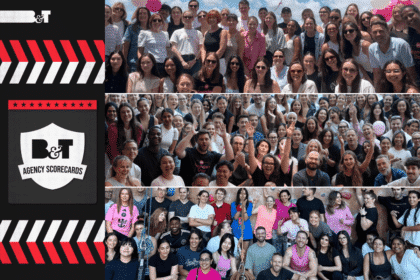Times have truly changed as Australia’s new audiences are now driving a market, not just a business. Today’s consumers need companies to take a step back and understand who their new-age audiences are, Sheba Nandkeolyar, founder of multicultural marketing agency MultiConnexions writes why they are different and how they are creating a disruption.
First came the ‘digital disruption’ and now the ‘customer disruption’ – and it will short fuse those companies who are not willing to adapt their strategies to the changing market’s mood.
Digital disruption drives innovation
The digital and social media age has given companies such as Google an ever-increasing repository of customer analytics. They thrive on this information punched in real time by millions of customers every waking minute. One minute you are searching for the nearest Asian restaurants using Google maps, next thing you are being recommended to download an app that lists out Asian food joints close by. Apple iTunes for example, brilliantly played on the consumers’ desire to purchase singles by an artist, helping them avoid buying an entire album. Domino’s Pizza took the pizza industry by storm when they came up with a Facebook ordering app, order tracking and 3D pizza creation.
It is certain that brands such as Apple and Domino’s Pizza have been innovative communicators. But what makes them innovative is their successful attempts at disrupting the way a customer thinks, behaves and spends money.
Customer disruption – the game changer
Globally, companies like McDonald’s, KFC and L’Oreal are capitalizing on ‘customer disruption’. McDonalds saw a huge opportunity in selling Halal food and KFC has taken bacon off the menu at some outlets to accommodate the religious sensitivities of Australia’s growing Muslim population. L’Oreal designed 33 shades for their brand True Match (US), in order to cater to consumers from different ethnic backgrounds. These businesses are ahead of their game – they knew that they had an opportunity cost to lose if they didn’t get involved.
Customer disruption led by the multicultural consumer has created the need for new mindsets and newer business models to track and maximize change. Especially because these new audiences display very different purchase dynamics and provide marketers with opportunities to create new products and services and adopt new touch points and platforms of reach.
Adland caught napping while bosses search for new revenue streams
While most in Adland are complacent with their mass marketing, a silent revolution is happening behind those intuitive boardroom doors as thought leaders are taking notice of the new audiences that are rapidly transforming the Australian audience profile.
47% of the Australian population was either born overseas or has at least one parent who was an immigrant. This equates to 10 million multicultural consumers from a total population of over 21 million. The forecast of total arrivals for the year 2014 alone is 511,500 according to the Department of Immigration and the net overseas migration is set to increase. With a purchasing power of more than $100 billion a year and a higher than average disposal income, the new audiences and multicultural customers are here to stay. The market change that we’re looking at can no longer be wished away.
IGNOring the issue will cost your business IN THE LONG RUN
A few Australian marketers who have already gained the first mover advantage are now reaping the benefits of their tailored marketing efforts. Other marketers can choose to act now and be the disruptor, reversing the slowing of revenue curves in an already saturated market.
The only growth today is coming directly from the new audiences – there are over half a million new and potential consumers who arrived in Australia this year alone. They will be buying groceries, clothes, housing, cars, household goods, education for their children and more. How many marketers talk to them? Reaching these audiences through mass media does not necessarily lead to engagement.
Marketers who show care and concern for these new audiences in their adopted country, can only forge a bond which will last a long time to come. There are early mover marketers: Telstra came out with their international calling product that caters to migrants in Australia who call loved ones regularly in India, China and a host of other countries. This made them feel at home.
Kellogg’s Australia took product innovation to a whole new level this Diwali, the Indian festival of lights, with its unique initiative to re-introduce Kellogg’s cornflakes to the Indian community in a way that worked for them. NRMA produces targeted campaigns for particular audiences – being in a new country NRMA is seen as a friend who helps them when their car lets them down. Banks also realize the potential of this audience, particularly the Chinese and Indian migrants.
Questions that traditional marketers may want to ask themselves
- Relationship marketing is key to doing business with these new audiences. Are we building these relationships or simply ignoring the fact that these audiences exist?
- One size fits all is cost effective. Would this really apply in marketing to the affluent property investors and also to several other products & services, majority of who are new audiences from Asia?
- In this Asian Century are we Asia ready? Not until we have marketers who realize that the homework begins now and in Australia.
As Australian audiences get more and more culturally heterogeneous, the so-called mainstream marketing strategies are being questioned by future marketers. Companies that do not have marketing strategies for these new and multicultural audiences stand to lose a large and affluent consumer base, as well as a first mover advantage in what is a very loyal audience segment. But more importantly, these marketers are not helping their companies to prepare for the future.
Sheba Nandkeolyar’s experiences spans across three continents. She set up MultiConnexions in 2006 and has a Gold Effie under her belt for multicultural advertising in Australia.








